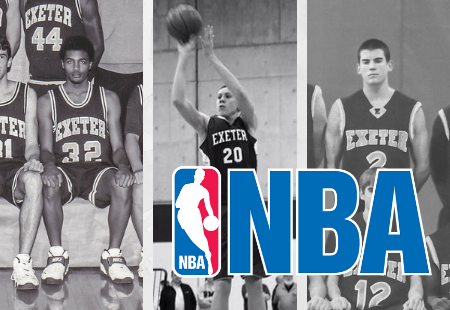 SPONSORED BY: SportsGrub
SPONSORED BY: SportsGrub
11/1/2020
By BOB YORK
“Five Swabs a day keeps COVID away.”
That headline, which introduced a story by Kelli Anderson in the Stanford (University) Magazine featuring a graduate of its medical school, was intended to be catchy, not comical. There’s no humor here, as the article focused on the doctor who put his reputation on the line by assuring the best basketball players in the world that staying safe while playing in the National Basketball League’s playoff bubble would be a slam dunk.
With COVID-19 swirling around outside, the NBA looked to Dr. Leroy Sims, its medical director, to perform no small feat: make sure its bubble didn’t spring a leak. And so, for the 82 days – July 22 through Oct. 11 – it took to conclude regular-season play, conduct seeding and play-in games, plus the playoffs, Sims kicked COVID-19’s butt: not one positive test was reported throughout the tourney.
Sims notched the shutout by supervising the bubble’s quarantines, its daily testing and health checks and its electronic checkpoints as well as overseeing the never-ending cleaning and sterilization and, last-but-not-least, the mask wearing and hand washing. And speaking of hand washing, Sims had to make sure there was plenty of soap in those dispensers because there was no shortage of hands needing to be washed. As of Aug. 5, when the playoffs began in earnest, there were 343 players on site, not to mention numerous other team officials.
It would appear as though Sims was destined for this. He grew up on the west side of Chicago, where he became accustomed to seeing the ghastly results of gun violence. He also spent much of his time roaming the halls of Northwestern Memorial Hospital where his mother, Claudia, worked as a nurse’s aide. In fact, he still remembers the excitement he felt watching “Emergency” on TV. “I loved the ambulances tearing down the street, running red lights,” Sims told Anderson. “I wasn’t one of those people to shy away from blood. I was a rubbernecker … I wanted to be in it.”
This future NBA medical director and emergency room physician began studying biology in earnest at Phillips Exeter Academy (1997) and is one of three alums who played basketball for the Big Red and who called the NBA bubble their home – right through the finals. The other two were postgraduates Greg St. Jean (2009) who is an assistant coach for the champion Los Angeles Lakers, and Duncan Robinson (2013), who averaged 11.7 points per game during the tournament for the runner-up Miami Heat. He spent a year at Exeter following a four-year stint at Governor’s Academy.
“This bubble was a massive undertaking … to pull this off and have it be successful, we had to make sure we were completely thorough with our testing and our contingency planning,” Sims informed Marc Spears, an NBA writer, for an article in The Undefeated. “We had to know that if someone tested positive, could they be placed in isolation to undergo further testing, or would we need to move them elsewhere? And if so, was there a way to minimize that person’s exposure to Coronavirus? The answers to those questions had to be in place.
“And that’s just coronavirus, not to mention everything else that could come up,” added Sims, who graduated from Stanford Medical School in 2007, and practices emergency medicine at Mills-Peninsula Medical Center in Burlingame, California. “Say a player has a knee injury, what’s the imaging look like? Can it be treated in the bubble or does the injury need to be treated off-site. And again, if it needs off-site treatment, how do we best minimize the outside exposure to Coronavirus?”
Sims, who has worked for the NBA since May 2018 as well as for the Golden State Warriors, USA Track & Field and the U.S. Olympic Committee, had plenty of other questions that he needed to be run by the infectious disease experts before tip-off. Those included the basics such as: What’s the cleaning process going to look like? How often should we wipe down? What should we wipe down with?
Other queries needing answers: What does the ventilation look like? How is the air circulating in the arena? How much time do we need between games to wipe down the floors and get the locker rooms turned over? Should the players shower at the arena … or back at the hotel? How close will the chairs be and how many chairs are we going to have? Who wears a mask … and what kind of mask should they wear?
Following the lengthy Q&A sessions, some of the rules and restrictions that made the rule book included: no visits to teammates’ rooms, no caddies in golf, no doubles in table tennis, no reusing a deck of cards, no interaction with the outside world.
The rule book also said daily COVID tests were mandatory and should consist of three shallow swabs of the throat and one swab of each nostril – accounting for your five swabs a day. Others required testing of temperature and oxygen saturation readings as well as symptom checks that were uploaded into wearable devices that tracked bubble residents and depending on their readings, either granted or denied access to entrances throughout the campus.
“We really did our homework and consulted a lot of people on this one,” Sims told Anderson, and it resulted in a 113-page medical manual that covered everything from A to Z, and finding those answers didn’t come through osmosis. “I liken it to my internship in the surgical ICU where you’re on call in a hospital before 5 a.m. and you’re lucky if you’re at home by 10 p.m. and you’re 24 hours on call every third day. During the first three weeks of July, I was getting up at 5 to 6 a.m. and was going to bed between 2 and 3 a.m. … every day.”
“I remember one of my former assistant coaches calling me up in early October and asking me if I was watching the playoffs,” recounted Malcolm Wesselink, who coached Sims at Exeter. “I said ‘no’ and he said ‘go turn the TV on, there’s somebody there that you’ll recognize.’ So, I went down and turned on the game and sure enough, there’s Leroy standing in the shadows down at the end of the court.
“I remember feeling so proud of him and thinking about all he’d accomplished to get to where he is today,” added Wesselink, who coached boys’ varsity basketball at Exeter for 27 years. “The thing I remember most about Leroy was that despite being only about 5-10, he was an outstanding defender. What he lacked in height, he made up for in quick feet and jumping ability. His quickness allowed him to lead the team in steals and his leaping ability allowed him to lead the team in blocked shots.
“I don’t remember if Leroy ever scored in double figures,” continued Wesselink, “but it didn’t matter, what he did for us on defense more than made up for any lack of scoring. Plus, he was always happy … always upbeat … he kept everyone’s spirits up, and as a coach, it’s always nice to have someone like that on the team.”
Although Sims turned down opportunities to play collegiate basketball at the University of Chicago, Emory and Washington University in St. Louis, he took those fast feet to Stanford where he was a walk-on on the track team. There, he helped The Cardinal win an NCAA title his junior year and he still owns the school record in the 55-meter dash and probably will forever – because it’s no longer a contested event.
“Greg (St. Jean) comes from an outstanding basketball pedigree … especially when it comes to coaching,” said Wesselink of his former charge who was hired prior to this past season to serve as a player development coach and advance scout for the World Champion Los Angele Lakers. “His dad, Garry, coached the Sacramento Kings (1992-97), was general manager of the Golden State Warriors (1998-2004) and served as a scout for the New Jersey Nets (2010-11), so he has literally grown up with the sport and it’s no surprise to me that he’s coaching in the NBA and it won’t surprise me if he plays a part in winning another NBA crown.
“Thanks to his dad, Greg knew the game inside out and you could tell that when he was playing here,” added Wesselink. “You knew he had a bright future as a player on the collegiate level, as well as a great understanding of the game if we wanted to pursue the game as a coach.
The younger St. Jean was a 6-3 guard, “who could play all five positions on the court and could play them all well,” said Wesselink. “Because of his background, he picked things up easily. I remember the one season he was here, he was injured quite a bit but whenever he was on the court, things ran better.”
St. Jean played his college ball at Wesleyan University where the leadership qualities he picked up along the way surfaced early in his collegiate career and because of that he became a rare three-time captain for the Cardinals. As a freshman, he ranked in the top-10 of NCAA Div. III in free-throw shooting percentage and helped lead the Cardinals to the program’s single-season win record. He was named recipient of the Wesleyan Scholar-Athlete Award his senior year and was a two-time winner of the Coach’s Award.
“Greg was one of the smartest players I’ve ever coached,” said Jay Tilton, the current Big Red hoop mentor, who was serving as an assistant coach to Wesselink when St. Jean stepped foot on campus. “He was intense and had a real passion for the game … he always elevated our practices and games and got his teammates to follow suit.
“Being a postgraduate, Greg wasn’t one of our captains, but he was definitely our emotional leader … he had a captain’s presence about him,” Tilton said of St. Jean, who, following his collegiate playing career, began his role as a coach. He initially joined the NBA’s Sacramento Kings as a player development coach, where he served for two seasons. He then spent four seasons as an assistant coach at St. John’s University under Chris Mullin.
Tilton will never forget Duncan Robinson, nor the year he spent with the Big Red as he played a key role in handing his mentor the first of four NEPSAC Class A hoop crowns. The 6-6, 170-pound forward did so by leading the team in scoring during that 2012-13 season, averaging 15 points per game, then chalked up MVP honors for his tourney play after scoring 24 points on eight of nine field goal attempts and hauled in 10 rebounds to help knock off Choate in the finals and his efforts earned him All-NEPSAC laurels for a second straight season.
“He was a big reason why we went 28-1 that season,” Tilton said of Robinson, who spent a year at Exeter after four seasons at Governor’s Academy. “He wasn’t just an outstanding basketball player, either. He had a tremendous work ethic and had a real passion for the game and that combination has taken him a long way.”
Following his prep career, Robinson took the path less traveled to join the ranks of the NBA. It began at Williams College, where he led the Ephs to the 2014 NCAA Men’s Division III Basketball Tournament championship game and was named the Division III Rookie of the Year and on the Division III All-American Team. He then packed his bags and moved up to the Division I ranks, a road that led him to Ann Arbor, Mich., and the University of Michigan.
There, he led the Big 10 Conference in three-point shooting percentage (.450) for much of the season and helped lead the Wolverines to Big 10 titles in 2017 and 2018. He was named the conference Sixth Man of the Year in 2018 and was a member of the team that lost to Villanova in the finals of the 2018 NCAA Division I Men’ s Basketball Tournament.
While with the Heat, Robinson has set franchise records for his three-point shots made in a quarter and a half and has tied the mark for three-pointers made in a game. In just his second season, he set a club record for three-pointers in a season and in a playoff game.
Tom Robertson, who was Robinson’s JV coach at Governor’s, is one mentor – and probably the only one – who admitted to being a bit surprised by his former charge’s rise to the top of the basketball world. “Back then, I can’t remember if he was even the best player on our JV team,” said Robertson. “He was relatively small (5-7) and didn’t really do anything in particular on the court to catch your eye.
“To his credit, Duncan spent hour upon hour working on his shooting in the gym,” added Robertson, “and about midway through his junior season all that work he had put in began paying off and he finished his senior season here averaging over 18 points a game.
“To me,” said his former mentor, “Duncan’s story of hard work and the success he’s achieved because of it is worth sharing with every young basketball player … it’s truly an amazing one.”
The NEPSAC SPECIAL NEWS is sponsored by SportsGrub. SportsGrub provides athletic teams with nutritional meals delivered directly to their event. We provide a diverse menu that athletes can order from directly in our app. Don’t just play to win, plan to win with healthy and delicious meals from SportsGrub. Contact us for more information at www.sportsgrub.com

 Address :
Address : 


